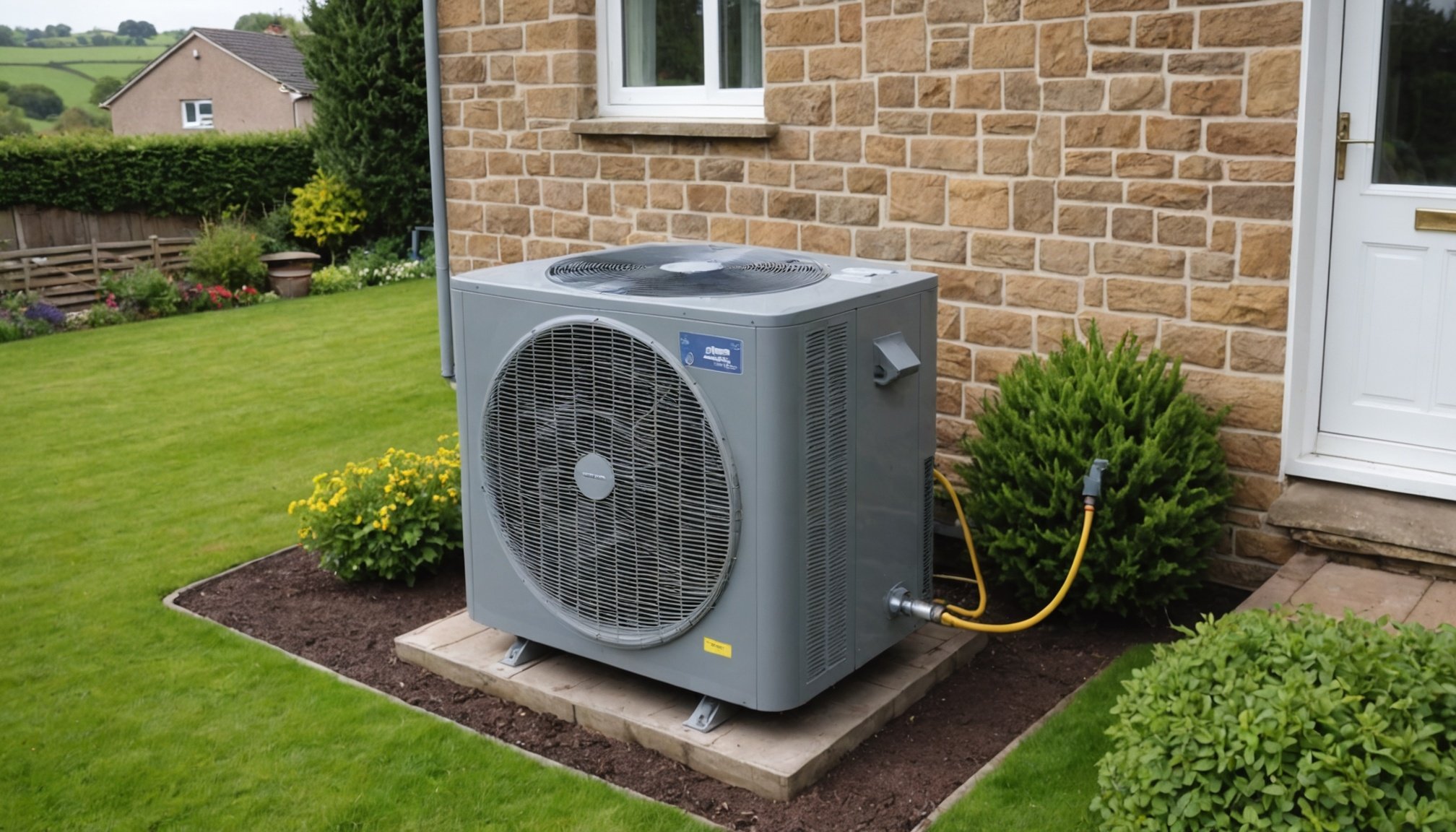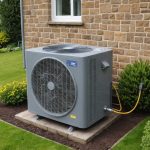Understanding Heat Pumps
Heat pumps play an essential role in enhancing energy efficiency in rural Scottish homes. These devices operate by transferring warmth from one location to another rather than generating heat directly, making them an effective solution for both heating and cooling. This method is particularly beneficial in the Scottish climate, known for its cold temperatures, ensuring homes remain comfortable year-round.
Benefits for Rural Areas
For rural Scottish homes, heat pumps offer several significant benefits. Their high energy efficiency means they often result in reduced heating costs, a crucial consideration for areas where energy expenses can be high. Additionally, heat pumps are environmentally friendly, supporting efforts to reduce carbon footprints and promote sustainability in rural communities.
Topic to read : Top Energy-Saving Cooking Techniques for Your UK Kitchen: Maximize Efficiency and Minimize Bills
Types of Heat Pumps
There are several types of heat pumps, each with distinct features suited to different rural settings. Air-source heat pumps are convenient and cost-effective, extracting heat from the air even in low temperatures. Ground-source heat pumps require more extensive installation but benefit from stable underground temperatures, providing consistent heat, especially valuable in the colder Scottish regions. Meanwhile, water-source heat pumps utilize nearby water bodies, offering another efficient and sustainable option for those with access to water sources.
By understanding these types and their complementary benefits, rural homeowners can choose the most suitable system tailored to their specific environmental needs and housing requirements.
Topic to read : Top Drought-Resilient Plants Perfect for Your UK Garden
Assessing Your Home for Heat Pump Installation
To evaluate your home’s readiness for a heat pump installation, begin with a comprehensive home assessment. This initial step is crucial to determine the feasibility and potential benefits of a heat pump.
Firstly, assess your home’s insulation and energy efficiency. Good insulation reduces the load on the heat pump, enhancing its performance and efficiency. Evaluate windows, walls, and roofing, ensuring they are well-insulated to prevent energy loss.
Selecting the right site for installation is vital. Optimal locations often include areas like a basement or utility room that allow easy access to both indoor and outdoor units. Ensure compliance with your specific installation requirements regarding spacing and accessibility.
Besides physical aspects, consider geographical and climate factors. Heat pumps operate efficiently in moderate climates, but performance may vary in extreme conditions. Therefore, assess your region’s climate to predict energy savings and efficacy.
In summary, a thorough site evaluation incorporating insulation, location, and local geography will pave the way for a successful installation. These considerations will not only optimise your system’s performance but also contribute significantly to energy savings and comfort in your home environment.
Step-by-Step Installation Process
Before beginning the installation process for a heat pump, it is crucial to follow a series of structured steps to ensure success. This detailed guide will walk you through the installation of both ground-source and air-source heat pumps, ensuring a smooth setup.
Preparatory Steps
Preparation is key in the heat pump setup. First, gather all necessary tools and materials, such as piping, fittings, and safety gear. Next, securing permits and understanding local regulations is essential to avoid any legal hurdles. Additionally, carefully prepare the installation site by clearing debris and ensuring access to utilities. This foundation will facilitate a seamless installation process.
Installation Procedures
For ground-source heat pumps, the procedure involves drilling holes or trenches to accommodate the ground loop, followed by correctly setting them within these spaces. On the other hand, air-source heat pumps require proper placement of the outdoor unit and establishing a connection through the walls. Ensure your system is then connected to the existing heating network, meticulously following the installation guidelines to prevent any mishaps.
Post-Installation Checks
Finally, conduct thorough post-installation checks. Test the system’s functionality and efficiency, ensuring correct drainage and airflow. Verify compliance with local building codes. This step guarantees your setup operates safely and at peak performance.
Cost Considerations and Financial Incentives
Heat pumps offer a sustainable energy solution, but understanding the cost structure and available financial incentives is crucial for informed decision-making. Initially, the installation costs can seem substantial, ranging from £6,000 to £18,000, depending on the heat pump type and system complexity. While this upfront investment might appear daunting, various financing options can ease the burden, including low-interest loans and payment plans offered by suppliers.
Assessing long-term savings is essential when considering heat pumps. These systems significantly reduce energy bills by efficiently converting energy, leading to potential savings of up to 50% on heating expenses. Thus, analysing the balance between initial costs and future savings is vital.
Furthermore, government initiatives offer notable financial incentives to encourage renewable energy adoption. For instance, programs like the Renewable Heat Incentive (RHI) in the UK provide grants or subsidies to subsidise installation costs. Such schemes not only reduce the initial financial barrier but also reward ongoing eco-friendly consumption, enhancing overall budget planning.
When choosing a heat pump, evaluating the cost-effectiveness and available incentives can maximise benefits. By considering all options and potential savings, one can make an informed choice that meets both financial goals and sustainability objectives.
Maintenance Tips for Optimal Performance
Regular heat pump maintenance is crucial to ensure your system operates efficiently. As a homeowner, there are several upkeep tips you can follow to optimize performance. First, regularly clean or replace air filters every 1 to 3 months, as clogged filters can impede airflow and reduce efficiency. Ensuring that the outdoor unit remains free of debris, such as leaves or grass, is also essential. Keep the area clear by trimming any nearby foliage.
It’s important to be aware of signs of wear that may necessitate calling a professional. This includes unusual noises, reduced heating or cooling output, and unexplained increases in energy bills. Addressing these issues promptly can prevent more severe damage.
Seasonal checks are vital for performance optimization. In the spring and autumn, inspect ductwork for any leaks or blockages, and ensure that the thermostat settings are accurate. This routine will help maintain the system’s efficiency across different weather conditions.
By adhering to these maintenance tasks, you can not only extend the lifespan of your heat pump but also support sustained performance and energy efficiency. Remember, timely professional assistance should not be avoided when more complex issues arise.
Real-Life Case Studies from Scottish Homeowners
In the realm of heat pump installations, rural Scottish homeowners have stories that reverberate with lessons and successes. These case studies unravel the practicalities of adopting this renewable technology.
Imagine a rural setting where a family experienced firsthand the transformative impact of a successful heat pump installation. Located miles away from urban power centers, this household capitalized on natural resources to secure a consistent energy supply. They initially faced challenges, such as navigating the Scottish climate’s quirks and ensuring optimal placement and efficiency of the system. However, their real-world experiences revealed not just hurdles but triumphs.
Other homeowner testimonials echo similar sentiments. One notable lesson learned is the importance of correctly sizing the pump to accommodate household needs without excess. Another common challenge is managing the initial cost and logistics of installation. Yet, feedback consistently underscores satisfaction post-installation—primarily due to noticeable energy savings and the dramatic reduction in carbon footprint.
Energy savings have proven substantial. Some homeowners report up to a 30% reduction in bills, thereby showcasing the practicality of these solutions. While initial obstacles vary, the positive outcomes consistently demonstrate valuable returns on investment and enhanced satisfaction, painting a promising picture for others considering similar upgrades.











